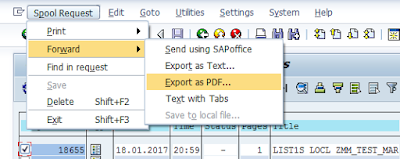BW
uses standard SAP’s ECC functionality with regards to foreign (FX) currency conversion.
This means that same set of TCUR* tables are being used while the BW system is
doing the conversion. This is valid while doing the FX conversion during transformation
/loading of data and also while running reports.
In
BW reporting a key figure in report can have Conversion Type specifies in its
definition under Conversion tab in its properties.
So
this is all that can be setup for the FX conversion. While looking at the converted
numbers in the report’s output an issue of wrong data can arise from users.
Question here is basically what FX from table TCURR was used?
To
find out that for starter an “Currency and Unit Conversion” debugging can be
started form t-code RSRT.
This is available by hitting on “Execute + Debug” button.
While
debugging it can be seen that following function modules are used in following
sequence:
RSW_CUR_TRANSLATION_RATE_GET Wrapper
function ->
->
RSW_CTT_GET Reads
currency translation type
->
RSW_SCUR_CHECK_AND_GET Determine
source currency
->
RSW_TCUR_CHECK_AND_GET Determine target currency
->
RSW_TRANSLATION_DATE_GET determines date used to find translation rate
->
RSW_RATE_GET_BASIC determine the translation rate
-> CONVERT_TO_FOREIGN_CURRENCY
here function DATA_FROM_DATABASE is
called which calls another function DATEN_BEREITSTELLEN
and this one finally reads the FS rate from table TCURR for previously determined Currency conversion type; from/to
currency, date and client of the SAP BW system.
Therefore
you may want to just set a breakpoint into the FM CONVERT_TO_FOREIGN_CURRENCY
to speed up debugging process.
Notice
that variable DATC is nothing else just value from EXC_DATE variable converted
into internal format by below ABAP statement:
CONVERT DATE exc_date INTO INVERTED-DATE datc.
This
means the source variable in character format is converted into target one as complement
on nine - difference to the number nine.
Needless
to say that above statement is obsolete ABAP statement. It shall be replaced by
using TRANSLATE statement.
More
information:










